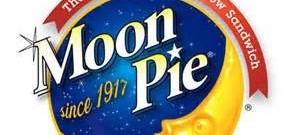|
Need a break from Covid 19-all-the-time? Here we look back to an earlier entry about the Clinton Presidency, grown men in chicken suits, and plain clothes FBI agents. It all starts with enthusiastic voter-business owner, a visit to downtown Atlanta where a crowd awaits a Presidential motorcade. I GOT THE CALL while driving up the expressway after work one Friday. President Bill Clinton was visiting our city and I had a very excited client on the phone. "Clint! You've got to look for me on the local news tonight! I should be on a story about President Clinton." "What?" I replied. "You hate President Clinton." "I know but you have to watch! My brother and I were wearing our chicken suits along the motorcade and something happened. We were interviewed by reporters." This was when I learned that my valued client, paragon of the community, successful entrepreneur and businessman had a side to him I did not know. It turns out he was politically active. No, he was politically passionate. How could I not know that? And, he explained, he took great offense during Bill Clinton's campaign against George H. W. Bush in 1992 when Clinton operatives started showing up at Bush rallies in chicken suits carrying "Chicken George" signs. It made him so mad that he bought two chicken suits that he and his brother would wear at Clinton rallies and events carrying "Chicken Willie" signs. This had been going on for a long time. It was years since Bill Clinton had first been elected. "I was along the motorcade route in my chicken suit with my sign having a great time talking with people. But the motorcade was delayed and then more delayed. And, then someone tapped me on my shoulder." "When I turned around it was a tall guy in a black suit holding and Secret Service badge. He asked me if it was my box labeled Chicken Suit in the stairwell of a nearby office building." "I knew this was no time to lie." My client, we will call him Mike, explained he had carried his chicken suit in the box and changed in the stairwell. The Secret Service found the box and called the bomb squad. The President's motorcade was rerouted. The news crews caught the his meeting with the Secret Service but it did not make the nightly news to Mike's disappointment. So, what's my point? Mike was a successful entrepreneur, whose success created hundreds of jobs. He created a great business from an idea, perseverance, and passion while he was still in college. He is someone to be admired. And, at least in this one respect, he was a bit eccentric. People who take on the challenge of building and growing a great business are not milk toast. Many of them have quirks. Some (not Mike) are downright difficult to deal with. But most of them share one trait. They are passionate about what they do. And they act when they see something that needs to be fixed. Like Chicken Willie. -----
All photos and text are copyright Clinton Richardson. If you like these posts, please tell your friends about the Venture Moola blog at Readjanus.com. And, feel free to share this blog. The more readers the better. Click here if you would like to get a weekly email that notifies you when we release new entries. Or, click in the side column to follow us on Facebook or Twitter. Occasionally, we will repeat a past post that continues to draw attention from readers. This post first appeared in January of 2016. The images are new. AN INTERESTING ARTICLE in the Economist points out why reading the book can sometimes be more interesting, and certainly more informative, than seeing the movie. Check out Nathaniel Philbrick's In the Heart of the Sea (Harper Collins) to read the whaling story that inspired the movie of the same name but also to learn how a group of 19th century Quakers turned the island of Nantucket and Massachusetts into a 19th century whaling powerhouse. Using a creative economic model that attracted capital investment and matched incentives to results, the leading financiers of the industry in New Bedford generated returns as high as 60% a year and average industry returns of more than 14% a year for more than seven decades! As the book and movie depict, whaling was dangerous business with trips that lasted years on the ocean to fill a ship's hold with oil. And, while there were whalers from around the world, New Bedford and Nantucket became the world's leading producers. As noted in the Economist article: "New Bedford was not the only whaling port in America; nor was America the only whaling nation. Yet according to a study published in 1859, of the 900-odd active whaling ships around the world in 1850, 700 were American, and 70% of those came from New Bedford. The town’s whalers came to dominate the industry, and reap immense profits, thanks to a novel technology that remains relevant to this day. They did not invent a new type of ship, or a new means of tracking whales; instead, they developed a new business model that was extremely effective at marshaling capital and skilled workers despite the immense risks involved for both." The whaling industry, the article notes, "was one of the first to grapple with the difficulty of aligning incentives among owners, managers and employees. . . . Managers held big stakes in the business, giving them every reason to attend to the interests of the handful of outside investors. Their stakes were held through carefully constructed syndicates and rarely traded; everyone was, financially at least, on board for the entire voyage. Payment for the crew came from a cut of the profits, giving them a pressing interest in the success of the voyage as well. As a consequence, decision-making could be delegated down to the point where it really mattered, to the captain and crew in the throes of the hunt, when risk and return were palpable." Just as with venture capital investments today, investors invested in multiple ventures to diversify risk. One firm noted in the article owned 15 ships, kept between four and nine at sea at one time, lost most of them and still turned a significant profit. The investors, being Quaker, were also frugal and open to technology improvements regardless of their source. The New Bedford system had its flaws as well. A lay system to divide a portion of profits among crew members could lead to abandoned crew members and worse. And, while the whaling industry eventually depleted the worlds population of whales and became mostly obsolete with the advent of the petroleum industry, many of the business practices they employed are used today, in modified form, in high-risk, high-return industries like venture capital. Next week we will talk about Great Baby Blues or the benefits of floating. Seriously, that's the topic. All photos and text copyright Clinton Richardson.
If you like these posts, please tell your friends about the Venture Moola blog at Readjanus.com. And, feel free to share this blog. The more readers the better. Click here to subscribe to a weekly email that tells you when we issue new entries. Or, click in the column to the left to follow us on Facebook or Twitter. THIS WILL BE THE FIRST in a series of posts on fundamental questions entrepreneurs face when they raise venture capital or angel funding. The hope is that in reviewing the basics will help when you are planning your fund raise.
The subject came up in a conversation with an entrepreneur wanting to raise seed capital to finance the formation of three investment funds. While this is not your typical entrepreneurial endeavor and involves no high technology product, the basic questions the entrepreneur faces are the same. After working through projections about how much money the effort was going to require and nailing down costs as best he could, the entrepreneur had a big number and was getting push back from potential investors. Here are the questions I posed and what the responses were. First, did he need to raise all three funds to have a successful business? The answer was that raising the first fund would give him a viable business. Second, what would it cost to set up and raise the first fund? Here, the number dropped from millions to substantially less than one million. Third, would the effort to raise the second and third funds be substantially hampered by raising the funds sequentially instead of all at once.? The answer was no. I was trying to find the real amount the entrepreneur needed to launch his business to help him decide how much money to ask investors for. The two underlying dynamics here are that 1) investors do not like to part with money they do not have to and 2) seed investment is the most expensive money to raise. While it is nice to have a big bank of money when you are starting out, if you raise more than you need you pay a heavy price for it. Because the money is more costly, you give up more ownership than if you deferred raising some of the money until later, when you have some success and can sell your company's equity at a more favorable price. If a viable approach here is to raise money for the first fund only, start the fund and then raise money for the second and third funds later when the business can show some success, management (the entrepreneur) is likely to be left owning more of the economic value of his venture. The risk, of this approach is that the money will be hard to find later because of lack of success or reasons beyond the entrepreneur's control. And, of course, you have to spend more time looking for money. In this case, raising a smaller amount to jump start the first fund also answered the questions the entrepreneur was already fielding from the family offices he had targeted.. And, it also brought his amount down to an amount that would be easier to fund from family offices and angel investors, his primary investor focus for the fund raise. The image above is part of a mosaic found in Pompeii. Happy Halloween to all. SOMETIMES I WONDER HOW ODD a technology startup would look to the average Joe. If you described one to them, would they even believe it was a real company with strong prospects?
Here’s just one example of an early stage company with an innovative product in a highly regulated industry. It is smartly conceived, smartly executed and intelligently financed. The company, which will go unnamed here, is headquartered in the southeastern United States. Like many startups, the company started out as an idea conceived by the founder. Organized as a single member limited liability company to start, the initial funding came from friends and family in the form of notes that convert in the future, at a reasonable discount, into company ownership later when a third party financing is completed. The first work was to see if the concept for the product could be designed and built. Rather than build out a staff of employees and rent space to build the prototype, the entrepreneur hired out most of the work carefully contracting to preserve his company’s rights. As you would expect, there were some zigs and zags as the concept was fleshed out and researched with at least two significant conceptual changes to make the product what it is now. Stretching his dollars when he could by associating with a fully equipped venture incubator / accelerator and hiring out regulatory work to experts, the founder was able to compete the prototype and the product testing required to get his product ready for regulatory review. A second round of financing to get the product through regulatory review and into early commercialization became necessary after the initial financing got the company through its product design and testing. After a broad search for regional and northeastern angel investors, the best money available was from a successful serial entrepreneur with family ties to the founder. Again, a convertible note was employed with a reasonable discount to the valuation obtained when the company does its first third party financing. The need for that is anticipated next year after regulatory approval is obtained and the company gears up to commercialize the product. Of course, lots of other things have been happening with the company. Reviews of the pending product with potential users and industry thought leaders has generated strong interest. A couple of key hires have been made and the company switched its legal representation on the recommendation of one of its investors. Here’s the company today in a nutshell. It has completed its product design and testing and is beginning the regulatory approval process. Initial interest from industry thought leaders and buyers is strong. The company is a single member limited liability company with the founder as its only owner. It operates out of the founder’s basement with two employees who mostly work from their locations where special equipment and resources are more readily available but who meet at least weekly to plan. The employees have options to buy ownership in the future contingent on their meeting milestones. It has money in the bank sufficient to reasonably carry it to the next phase all in the form of convertible debt. The managing board consists solely of the founder who is presently building an advisory board. This board will not have voting rights or responsibilities to manage the company. To fill this board, he is attracting people with expertise that can help him with the challenges he will have with the business as it grows from a development company into a commercial enterprise. So here we have a modern startup. Its product is ready and going into regulatory review. It has one owner, significant debt in the form of convertible notes, one founder, only two employees, an office at home, three lawyers in one law firm in three states, two out-of-state investors, and four advisory board members in four states across the country. It also has important relationships with an incubator and service provider. And, of course, money in the bank to fuel its next stage. What it lacks in brick and mortar it makes up for in intellectual property and progress. And, what did the founder think when he saw this posting? His two big take away messages were to be frugal and to "make sure you have savings to live off for a LONG period before you jump out on your own." He said he severely underestimated how long fundraising would take because he did not believe people who told him it would take so long. Fortunately, he had saved multiples of what he thought he would need before he started. Image above copyright Clinton Richardson from Arches National Park. I COME BY MY ENTREPRENEURIAL chops honestly, in a time honored way. I inherited them.
And then I worked for decades to hone the few skills I started with by working with the leaders of hundreds of growing businesses as they faced the thousands of challenges that stand in the way of growing something new and important. I also went to law school and partnered with some great lawyers with over the years. But I learned the most from working with talented business leaders as they grew their businesses. I am an unabashed fan of people who grow and sustain profitable businesses. I have advised them, invested in them, and served on their boards. I know what a challenging and all consuming task business building can be. I know the creativity and courage involved. And I know how starting and growing a business can change a person's life and make them more alive. I know this from watching my father's transformation from executive employee to business owner and operator when he opened his first carpet mill in 1967. I was in high school then and moved with the family from the cozy suburbs of the North to the unfamiliar small town South. Northwest Georgia, the center of the country's floor covering industry at the time, became our new home. I learned what a "southern breakfast" was from the crew on the loading dock of my father's plant while working there weekends and during the summer. It's an RC Cola and a Moon Pie, at least on the shipping dock of a certain carpet mill. I worked that shipping dock and the sample room. I swept floors, washed trucks, drove forklifts, moved rolls of carpet, made deliveries and did whatever I was asked. At home over the kitchen table my father would suffer through my many questions about the business. How was he handling this? Why he was doing that? Always, he handled them with grace and insight. And over time, he took to sharing financial statements with me so I could get a better picture of what was going on. In the end, I chose the legal profession instead of a career in business. My dad was an enthusiastic supporter. I started in litigation but quickly gravitated towards business and deal making. I took to heart the old adage that the qualities necessary to start and grow new businesses skip generations and decided, instead, to work with entrepreneurs and help them accomplish their objectives. It's been a great run with some entrepreneurial activities to supplement my legal practice. In these blogs, I will reflect back on a lifetime in the trenches and, hopefully, continue to be a constructive contributor to the American entrepreneurial experience through these blog entries. Follow these blogs and send entries on to your friends. And consider, as offered on the right side of this blog page, subscribing to the RSS Feed to get weekly notices when entries publish. IT IS ONLY AN IDEA at this point but apparently a good one. The entrepreneur is striking out from a good paying job with an industry leading company to build a product he knows the industry needs. His wife works with a different employer and will support him through the effort providing financial stability and health insurance while he gets started. They have saved some in anticipation of this new venture.
After he provided his resignation and shared his plans, his employer offered to fund the development in-house and to let him lead the effort. When he said no, his boss offered to invest in his new company. He said he wanted to get in on the ground floor. Nothing specific – the entrepreneur has just begun sketching out his anticipated financial needs – but a firm offer to fund the start up in exchange for 50% of the company. They have the money to fund the prototype development, which they estimate will take less than six months. The entrepreneur’s first inclination is the decline the offer. He and his wife have heard ‘horror stories’ about entrepreneurs taking on a big investor early. This is a new experience for the entrepreneur and he wants to be cautious. What should he do? A year’s funding might involve up to $200,000. The second year would be much more expensive. Complicating matters is the nature of the business the prototype might generate. It could be a product licensed to industry companies to improve their operations. Or, it could be the basis of a service business where the company uses the technology to deliver end products or experiences customized to industry client needs. The investor is experienced in private investments but not with investments in companies like this one. The investor could provide contacts that would be helpful in the industry and possibly some credibility to this new venture. The difficulty of getting a valuation for the company at this stage that would satisfy the investor and the founder is an important factor. So too, for this entrepreneur, is the desire to develop a prototype before valuing his company. The idea of conceding 50% of the venture’s future value for as little as $200,000 is a non-starter for this entrepreneur. What we discussed, instead, was deferring the investor question until the prototype is complete or nearing completion. The risk, of course, is that the investor will cool to the investment during that time. Alternatively, the entrepreneur could try to negotiate a percentage ownership now with the investor but this will take time and money the entrepreneur is eager to put to work on his invention. Another alternative is to offer to take the money in a non-guaranteed promissory note that converts to equity later when there is more information, and hopefully another investor, to give some substance to a company valuation. Silicon Valley, specifically the Y Combinator in Silicon Valley, has come up with a third approach we do not see used much in the Southeast but which has proved useful for some companies I have worked with. That is the SAFE instrument (simple agreement for future equity). Basically, it is an agreement to invest now without a promissory note for the promise to convert the investment in the future for equity of the type being sold to other investors. Often, the instrument provides the investor with a discount to the future price. That was my recommendation in this case, if the entrepreneur decides he needs to include the investor now. I also provided some introductions so he could get other opinions. The devil, however, will be in the details. What size the discount should be and whether the investor wants to further complicate the instrument to the point that the exercise becomes too expensive or time consuming. Many investors, in their zeal to be protected and have all the terms their buddies have ever gotten, can overburden SAFE agreements with covenants that attempt to de-risk the investment beyond what’s rational. Time will tell here with more conversations to come. ENTREPRENEURS, LAWYERS AND DOCTORS share some common traits. Most are bright, competitive and focused. Most of them are good problem solvers. But sometimes being competitive and focused can get in the way of effective problem solving.
Consider an engagement I remember with some frustration. I was called in to represent six physicians with an active specialty practice. They and their practice were highly regarded and they, you could tell, considered themselves shrewd businessmen as well. Some time back they had backed the development of a new technology. The entrepreneur had worked directly for them but had since moved to independent facilities as his operation grew. The doctors were frustrated with their entrepreneur and felt less informed than they thought they should be. It had been a few years since they have made their monetary investment and they wanted to cash out. That was my engagement. To get the company to buy their stock now at a price they had designated. Usually that would be a challenge at the price point my clients wanted. Growing companies like this one, with little or no revenue, rarely have cash lying around in large bundles. They, like this company, are still dependent on inflows of cash from new investors to fuel their growth. So, diverting a large amount of cash away from the business to buy out some early shareholders usually depends on one of three things: large loans personally guaranteed by the founders, new money coming in at a higher valuation that is willing to buy stock from shareholders, or a significant pending transaction. Entrepreneurs are loath to give personal guarantees so the willingness to buy usually signals one of the two latter reasons. In this engagement, it turned out, the only challenge was timing. The company was willing to cash out all six of the investors at the designated price but needed time to get the funds together. At the same time, they were not eager to buy. They also encouraged the doctors to wait and not cash out now. They would not say why. But they agreed to let any doctor opt out from the sale. I passed this on to my clients who were still frustrated with the entrepreneur and suspicious of his motivations. They asked me what I would advise. Of course, I could not make the decision for them but I pointed out that the company’s ability to gather the cash needed to buy them out coupled with their recommendation that the doctors wait suggested that a transaction might be in the works. Their inability to say why they thought we should wait could be imposed by conditions to a pending merger, acquisition or public fundraising event. If this was true, waiting could get them a higher price. The fact that they had a couple of emergency board meetings while we were negotiating also suggested a transaction might be imminent. And, their willingness to accept our price without much negotiation indicated they thought the price was undervalued. I told them I would wait if I did not need the money now. What did they do? Five of them sold for their price. They remained suspicious of the entrepreneur’s motivations and discounted the possibility of a significant transaction. They accomplished the goal they had focused on - getting out at their price. The sixth held onto his shares. Six months later, the sixth doctor moved out of the practice after the company whose stock he kept merged into a public company and his shares became worth multiples of the price he did not sell at. Of course, there was risk in his decision. Events could have developed differently. But he answered the question "what's wrong here" by altering his immediate buy out goal and was amply rewarded. Despite the value of being laser focused, sometimes you have to ask yourself what’s wrong with a situation and consider an alternative path. Photo taken in Atlanta Georgia. The clerk at the Wild Birds Unlimited store noted the irony of being next to a chicken wing restaurant. “We feed them and they eat them." WHAT DO YOU DO when your client, who likes to self-lawyer, calls you and asks you what term you would change if you could only change one provision in a funding term sheet?
I will share my answer with you with one caveat. I do not think there is one best answer to the question especially the way it was posed to me. But, sometimes, you are called upon to make a call when there is no best answer. First, some background. I knew this client well and had worked with him for years. We had negotiated his way out of a prior business together and he had a fast growing company that needed cash badly. He loved to do his own lawyering and we knew each other well enough to kid about how he was just deferring my services until it was time to clean up his messes. And, he was very bright and good at negotiating. When he called with his question he had been searching for money for a while. A prominent West Coast venture firm was visiting as part of their diligence and had written him a big check he could cash as an advance against their full funding if and when he signed their term sheet. They were leaving in an hour and he wanted the advance money now. He would not let me see the term sheet, saying it was your typical series A convertible stock deal with the right to have a director and some class vetoes. “How long is it,” I asked. “Just a couple of pages,” he answered. So, back to the original question. If you cannot even read the term sheet and have to give an opinion about what one thing to negotiate – the client thought correctly that if he changed just one term they would sign it on the spot and release his advance check – what would you change? The valuation? The veto rights? The preferred preferences? The director rights? Or, some other restrictive term common to series A investments? Well I went a different direction. Remember, it needed to be a potentially impactful change that the business people on the scene would feel like they could change without risk. My answer? The attorney fee reimbursement obligation. I said cap the amount you have to reimburse their lawyers at a low number. An hour later I received a copy of his signed term sheet. It was short on details with only one written change initialed by both parties. The amount the company had to reimburse the investor’s lawyer for was reduced from $30,000 to $5,000. And then the fun began. A week later I got a call from a partner in the big Silicon Valley law firm representing the venture firm. He was annoyed by the attorney’s fee limitation and admitted he did not quite know what to do. "It’s not enough for us to staff this properly," he said, "or even to draft the documents." He asked if I would draft the documents (always an advantage) and said he will send me a copy of a recent funding they did for the same client with a company they bought controlling interest in. He asked me to use his documents as a form. I agreed. What I heard was that his form would not have the normal vetoes and board protections that restrict management freedom. You do not need those when you buy a controlling interest. I also heard that he was not going to think hard or critically about what we sent him if it did not look too different from his form. When I got his form, I talked with my client. The form was what I expected. It was much lighter on restrictions that a normal minority interest series A investment. So we agreed to an approach that would have me stick closely to the form adding in only what was specifically required by the sketchy term sheet. Once this was done we sent the agreement with a redline against his form to the lawyer in Silicon Valley. As we guessed, he gave it only a cursory review and we closed quickly. The client wound up with great terms in his series A that continued to flow through four more rounds of funding. On more than one occasion new investors, who felt constrained by the terms of the first round which are usually the most restrictive, noted to me that they could not believe the terms we got for the company. And the ultimate end? The prominent West Coast venture fund that provided the series A funding got it right notwithstanding the light protections in their series A stock. The entrepreneur delivered a gigantic exit after several years that provided the venture fund with its highest return in its portfolio. Would I give the same answer again? I do not know. It would depend on the circumstances. I GOT THE CALL while driving up the expressway after work one Friday. President Bill Clinton was visiting our city and I had a very excited client on the phone.
"Clint! You've got to look for me on the local news tonight! I should be on a story about President Clinton." "What?" I replied. "You hate President Clinton." "I know but you have to watch! My brother and I were wearing our chicken suits along the motorcade and something happened. We were interviewed by reporters." This was when I learned that my valued client, paragon of the community, successful entrepreneur and businessman had a side to him I did not know. It turns out he was politically active. No, he was politically passionate. How could I not know that? And, he explained, he took great offense during Bill Clinton's campaign against George H. W. Bush in 1992 when Clinton operatives started showing up at Bush rallies in chicken suits carrying "Chicken George" signs. It made him so mad that he bought two chicken suits that he and his brother would wear at Clinton rallies and events carrying "Chicken George" signs. This had been going on for a long time. It was years since Bill Clinton had first been elected. "I was along the motorcade route in my chicken suit with my sign having a great time talking with people. But the motorcade was delayed and then more delayed. And, then someone tapped me on my shoulder." "When I turned around it was a tall guy in a black suit holding and Secret Service badge. He asked me if it was my box labeled Chicken Suit in the stairwell of a nearby office building." "I knew this was no time to lie." My client, we will call him George, explained he had carried his chicken suit in the box and changed in the stairwell. The Secret Service found the box and called the bomb squad. The President's motorcade was rerouted. The news crews caught the his meeting with the Secret Service but it did not make the nightly news to George's disappointment. So, what's my point? George was a successful entrepreneur, whose success created hundreds of jobs. He created a great business from an idea, perseverance, and passion while he was still in college. He is someone to be admired. And, at least in this one respect, he was a bit eccentric. People who take on the challenge of building and growing a great business are not milk toast. Many of them have quirks. Some (not George) are downright difficult to deal with. But most of them share one trait. They are passionate about what they do. And they act when they see something that needs to be fixed. Like Chicken Willie. FOR COMPANIES THAT NEED TO RAISE FUNDS, it can be tempting hire legal counsel based on the lawyer’s ability to make introductions to funding sources. Not many CEO have the time to stay connected to those sources and the connections of their legal counsel can be viewed as a plus.
That’s all fine as long as the lawyers skills as a lawyer are vetted and the counsel engaged is savvy and experienced in the matters they are likely to be needed for, including venture funding documentation. And, while it may not be easy to fully vet the qualities of savvy or good judgment, you can inquire about past experience and reputation. Confident lawyers will be happy to share names of CEO’s and others they work with who can provide firsthand information about what it is like to work with them. It is not enough to rely on the general reputation of a law firm a prospective lawyer works with. The careful CEO or CFO will get granular when investigating a legal hire. Here is why it matters. Good lawyers with the right experience can save you from future headaches while helping you complete transactions on favorable terms. Consider the following example involving something as mundane and detailed as notifying shareholders about their first refusal rights while completing a Series B financing. In our example, the prior Series A financing granted rights of first refusal to investors that entitles them to purchase a pro rata share of the Series B offering. On the verge of closing a large Series B financing, the company sent out notices to the Series A shareholders telling them about the pending fund raise and giving them a fixed period to exercise their rights using a form they provided. The notice requests the Series A shareholders to either waive the first refusal right or purchase a full pro rata share. It also requests they either waive or elect to participate in buying a maximum share of first refusal shares not purchased by other Series A holders. Simple enough and, superficially at least, all appears in order. But there are details unattended to and risks being taken by the company in following an all or none approach. The risks stem from the agreements used in the Series A financing and from the fact that shares are being offered for sale. The investor rights agreement from the Series A financing grants a right to buy a pro rata share without explicitly saying whether the holder has to purchase all of the shares available or has the right to buy fewer shares. The term sheet, which preceded the investor rights agreements, and was disclosed to investors is clear that an investor can buy part or all of a pro rata share. Also, by way of background, options like this are usually interpreted absent express language to the contrary - to entitle a holder to buy less than all of the shares subject to the option. The company and its lawyer, however, have chosen to interpret the agreement to grant rights to purchase all bu not less than all of the first refusal shares. Their notice and exercise form are so constructed putting the effectiveness of the notice at risk. In addition, the first refusal agreement is unequivocal that the notice about exercising rights to buy first refusal shares not acquired by others must come later, after the company can determine how many shares are available. Failing to meet this requirement also puts the effectiveness of the company’s notice at risk. Lawyer gobbledygook, right? What possible difference could any of this make? Technical deficiencies in the notice cannot make that much difference, can they? Yes, the can. The problem is that if the notice is ineffective it can have expensive ramifications down the line for the company and other shareholders. For example, if the company goes public in the next few years, lawyers for the underwriter will diligence the Series A documents and the notice. And they will care about whether the notice was effective. If it was not valid, the first refusal rights may still be effective which means they will need to be cleaned up or disclosed as part of the offering. This can create an expensive and time consuming headache for the company just when it is eager to finance. A different, but equally annoying, set of problems can arise if the company wants to accept an offer of purchase later on. The buyer’s lawyer will do the same diligence and surface the same problem. In this context, the problem calls into question how many shares and rights to buy shares exist in the company being bought. The company will say the first refusal rights have expired. One or more Series A holders may say they still exist because the notice was defective, especially if the new share valuation is attractive. There are ways to resolve the issue but they can be expensive and time consuming to execute. So, what would you want your lawyer to do under the circumstances? Issue the notice in the form it was or fix the timing issue and describe the purchase rights consistent with the clearer language in the term sheet to avoid creating issues in the future? Most deal lawyers would not find this a difficult question to answer. But at the same time, most CEOs would not even be aware there is an issue without guidance from their lawyer on what probably feels like a minor detail. Hence the admonition about hiring attorneys. The lawyer in this instance was hired in part because he had investor connections and he comes from a big firm. He may even be good at a lot of things but the this detail of a large funding is a mess, potentially a very expensive self inflicted mess. Remember when hiring counsel: A good lawyer's primary value is in representing his or her client well with attention to details and a sensitivity to issues small and large that can impact the client. Connections can be a plus but they are dangerously not enough. Look for more on lawyers in a later posts and check out our March 14 posting about the conflicts connected lawyers sometimes bring to their entrepreneurial clients. For more about fundraising and deal terms check out Richardson’s Growth Company Guide 5.0 – Investors, Deal Structures, Legal Strategies. |
the blog
Travel, history, and business with original photos.
your hostClinton Richardson - author, photographer, business advisor, traveler. Categories
All
Archives
July 2023
Follow us on Facebook
|
Check out Ancient Selfies a 2017 International Book Awards Finalist in History and 2018 eLit Awards Gold Medal Winner and
Passports in his Underpants - A Planet Friendly Photo Safari a 2020 Readers' Favorite Winner in Nonfiction
Site Copyright 2024 by Clinton Richardson












 RSS Feed
RSS Feed